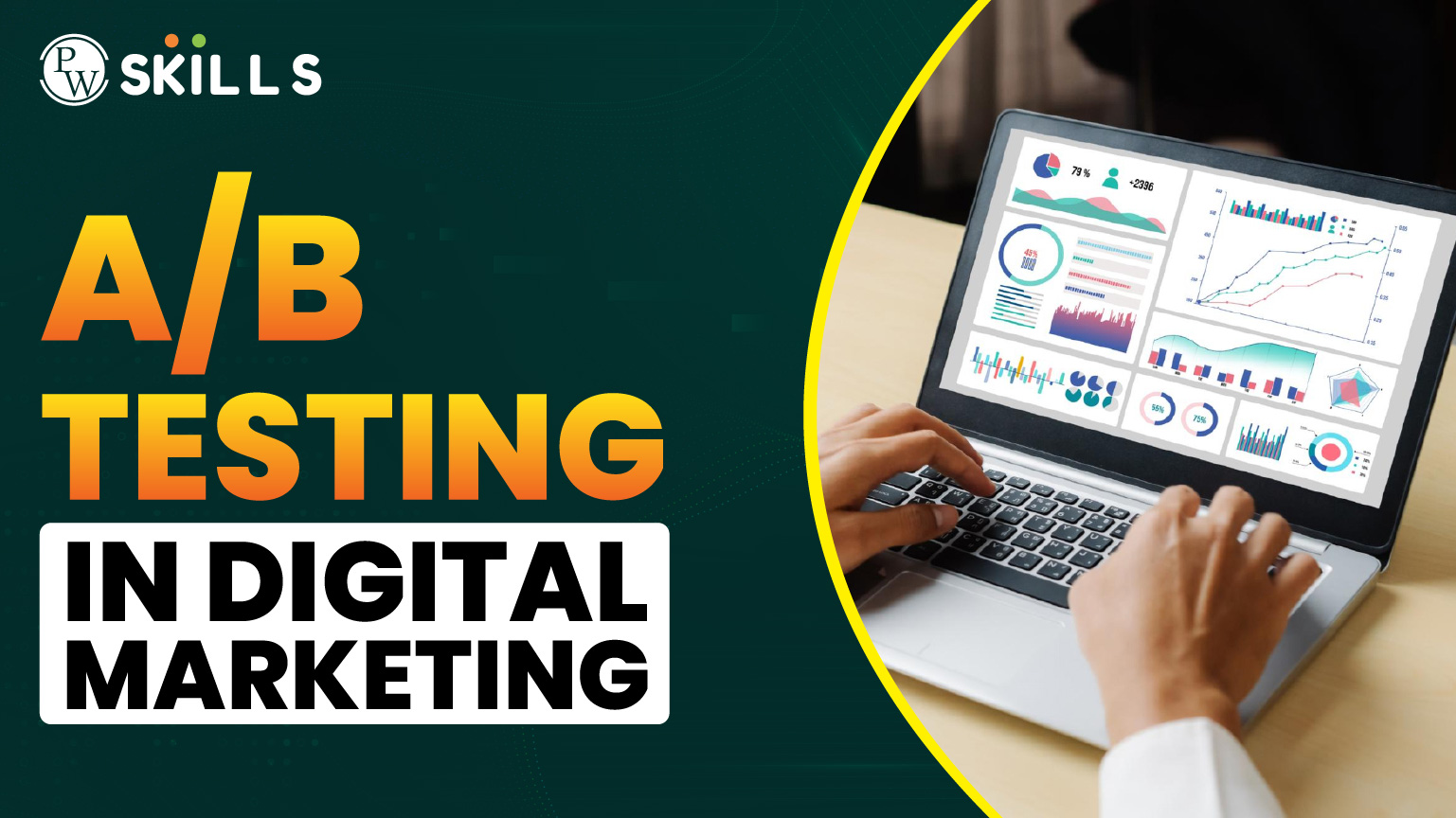In A/B Testing, businesses demonstrate two variants of a product or service to determine which one is more favored by the target audience. This will help organisations take a more informed final decision on which version better fulfils their marketing objectives.
Here, digital marketers use different variants of the same page with just one or two elements changed, which generally include sales copy, display ads, marketing emails, social posts, call to action, color theme, or more. Here, let us learn more about A/B testing in digital marketing and its uses.
What Is A/B Testing In Digital Marketing?
A/B testing in digital marketing is comparing two versions of a product or service to find out which version fits the best for users. It is also known as bucket testing or split testing. It compares version (A) against variant (B) to understand which version is more successful based on the required metrics.
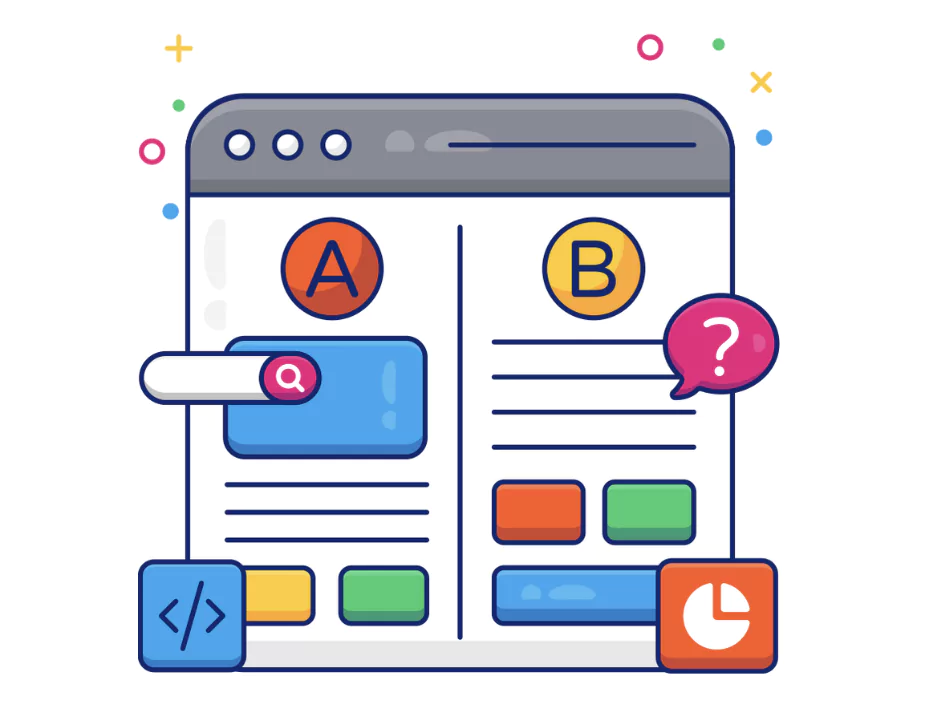
A/B testing is a powerful metric that can be used to optimize your marketing efforts. When you are looking to attract new leads or improve engagement with existing customers.
- In A/B testing, half of the users receive version A while the other half receives version B, and the performance depends on which version receives more interaction i,e. Form completion, purchase, link baits, and more.
- A/B testing gives businesses a chance to test which version resonates more with the real audience and make improvements accordingly, such as a blog post with an image or a blog without any image.
All variants in A/B testing are tested based on different performance metrics, which are then collected and interpreted by an expert from the organisation to decide which variant is performing better in the market.
Read More: Earn ₹3000/Day from Digital Marketing Earning at Home | Full Guide 2025
History of A/B Testing
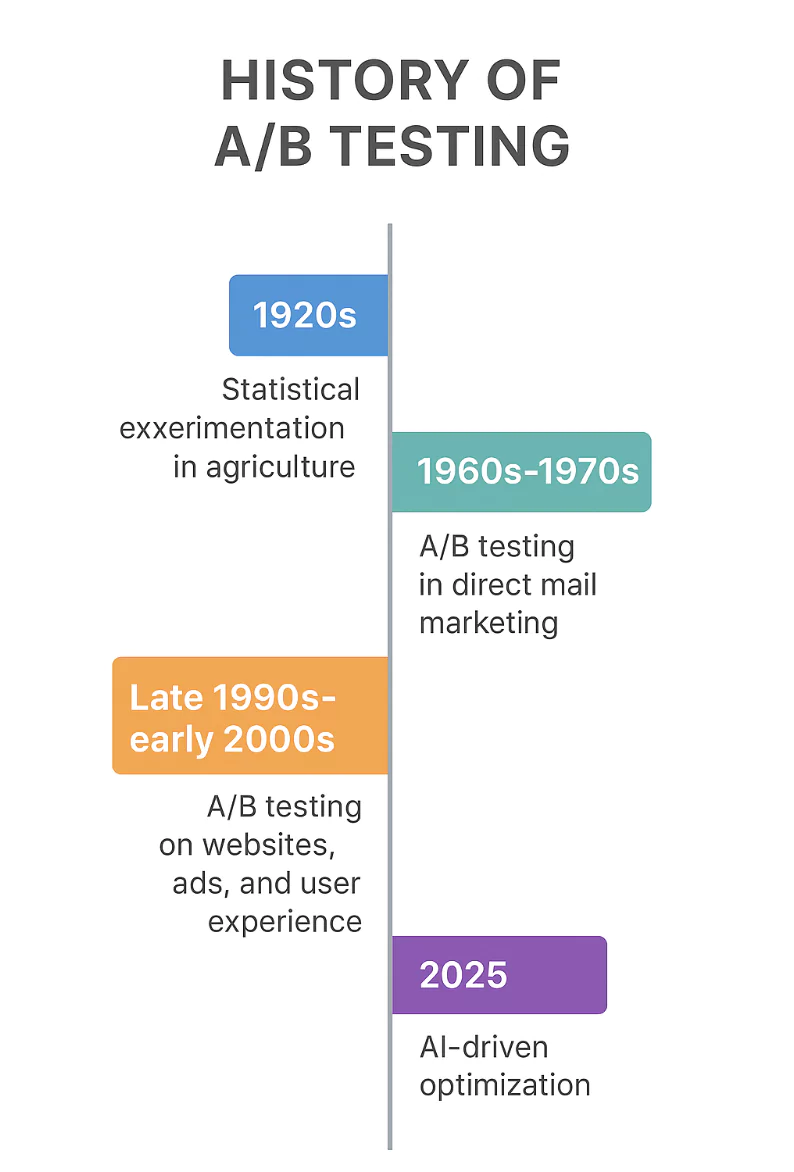
The A/B testing approach started way back when the concept of digital marketing and even websites were not very common. But the approach of A/B testing evolved with modern tools and methods.
- Ronald A. Fisher, in the late 1920s, developed a method from Randomized Controlled Trials (RCTs) to test different farming techniques to determine which one gave better results.
- In the 1970s, A/B testing started gaining more popularity with direct mail marketing, where marketers sent advertisements in different forms to test which one got the most response.
- With the rise of the internet in the 1990s, the A/B testing shifted to its complete digital form, where big giants like Google, Facebook, and Amazon started using this method to test their website layouts, ads, and user experience that too in real time.
- You would have hardly noticed the amount of A/B testing Google has already run on search engines to check algorithms and experiment with the new version updates.
Today, A/B testing plays an important role in digital marketing, where businesses test their variants quickly and scale the more favored variant. It is a standard practice in Conversion Rate Optimization (CRO), app design, digital marketing, and product development.
Read More: What is Answer Engine Optimization (AEO) & A Guide to AEO
Why Is A/B Testing Important?
A/B Testing is a cost-saver when it comes to deciding a suitable component or variant in a product, service, or marketing. Suppose you want to go with a dark theme for your site, while your current theme for the live site is a simple light theme. You can take people’s views on which one suits them best and choose accordingly. A/B testing is very similar to this, where your campaigns are generally.
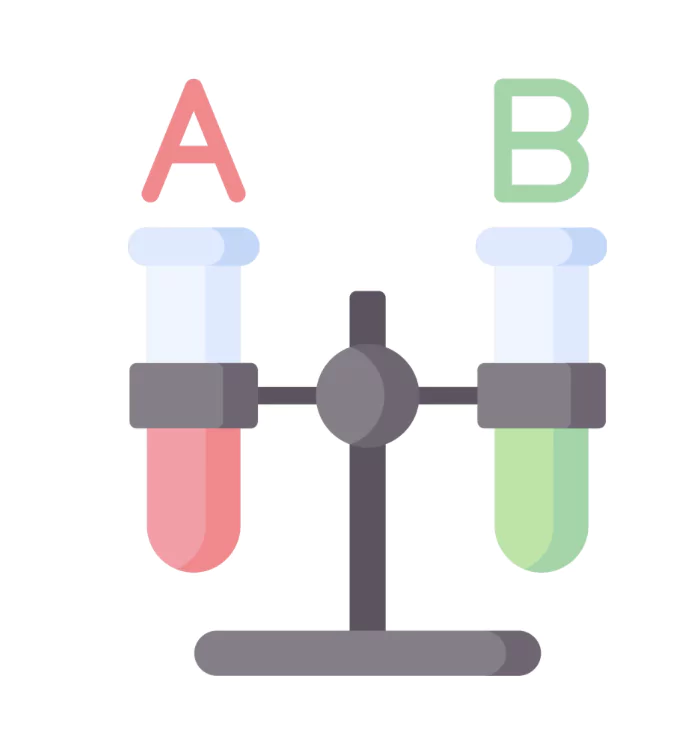
Suppose you are running a Facebook ad to promote your online course, and you have two types of headlines in mind that might attract more organic clicks.
- Version A (Control): “Learn Digital Marketing in 30 Days – Enroll Now!”
- Version B (Variation): “Become a Digital Marketing Pro – Start Your Free Trial Today!”
You then present your version A to 50% of your audience and version B to the other 50%. After a week, when you analyse the Click-Through Rate (CTR) of both headings, Version A gets 2% CTR and Version B gets 4% CTR, then Version B is the winner.
This minor effort or variation check might prove to be a major improvement in the response you get through your digital marketing campaign.
Where to Use A/B Testing Work On?
There is so much you can do with A/B Testing in digital marketing. Some of the common uses are mentioned below.
- Email Campaigns: You can test different versions of Email campaigns for your brand for various events, such as onboarding, events, offers, and more.
- Multimedia Marketing Strategies: You can use A/B testing to find the perfect media marketing integration for your brand, including images, audio, video, animation, GIFs, and more.
- Paid Internet Advertising: Paid ads are costly and are revenue-oriented marketing tactics that need to be well optimized with marketing efforts that actually convert. Here, A/B testing can help you go with people’s favourites.
- Newsletters: This marketing campaign is used to nurture your onboarded leads. To engage them with your brand services and product and ensure a good overall experience, you can use A/B testing to test different variables.
In each of these categories, you can make different variants with options such as variation in color scheme, layout, number of images, types of images, headings, subheadings, pricing of product, discount offers, event offers, call to action designs, video emails, and more.
![]() Join Our Digital Marketing WhatsApp Channel
Join Our Digital Marketing WhatsApp Channel
How To Conduct A/B Testing In Digital Marketing?
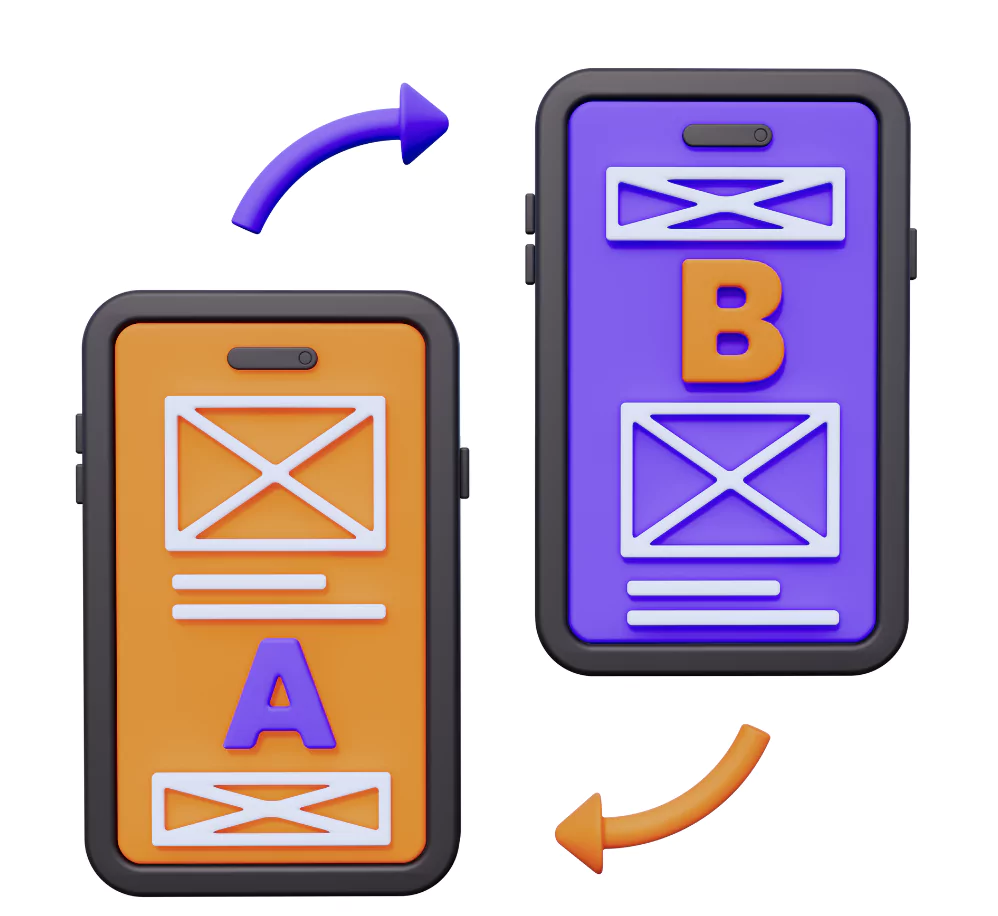
Check the step-by-step method to conduct A/B testing in digital marketing below.
1. Lock the Confusion
There will be many situations where you will be stuck in a decision conflict where you have to choose between different variants, which might give better results. Also, when a campaign does not get enough attention, including conversion or traffic, then there is a need to experiment with different variants to find a better version.
You need to be familiar with which element is not contributing to conversion. For example, you have an online store for clothing and most of your sales are coming from offline or direct marketing and very little response from online campaigns, such as email marketing. Here, you can try a different approach to see which one works better.
Read More: Conversion Rate Optimization (CRO): 8 Effective Ways To Get Started
2. Analyze Collected Data
After you sort an element target that you want to analyse with A/B testing to find out how much they are contributing to conversion. Various metrics like click-through rate, Bounce rate, watch time, and more can be used to predict whether the element is working or is irrelevant to the target audience.
This is an important step to target elements that contribute to conversion and traffic on your site.
3. Hypothesis Testing
After analysing data, you have to decide what exactly you need to test and how to test it. This step is generally used to check what might work better for your site. Suppose you want to change the position of the “Buy Now” option on your website to a different position on the website.
You suspect that if you keep your button at the top right corner of the course landing page, you might get better engagement on your site. Now, put this idea into implementation mode and run your A/B test version on your page with your target audience. Test the implementation by running it for 24 hours.
4. Complete Data Analysis
After the test campaign is over, you can analyse the results for any noticeable changes. If there are no significant changes, then you can try testing some new element.
Learn Digital Marketing & SEO With PW Skills
Master SEO fundamentals and techniques with the advanced Digital Marketing Course loaded with the power of Artificial Intelligence. Master advanced AI tools in SEO and strategies to deliver traffic, organic leads, and revenues to your clients for a freelance job.
If you are a student or a professional looking for an in-house career or freelance contract-based work in Search Engine Optimization then this all-in-one course is all you need.
Looking for More?
- Get industry-led live sessions with professionals in digital marketing
- Build a fully job-optimised project portfolio which demonstrates your skills, and strengthen it with projects.
- Get opportunities for full-time jobs or freelance clients for different digital marketing tasks.
- Get personalised career assistance to prepare for interviews and land your dream job
- Get industry recognised certifications from PW Skills
- Enhance your job readiness with practical skills and expert career guidance.
A/B Testing In Digital Marketing FAQs
Q1. What is a/b testing in digital marketing?
Ans: A/B testing in digital marketing is comparing two versions of a product or service to find out which version fits the best for the users. It is also known as bucket testing or split testing.
Q2. Why is A/B testing important?
Ans: A/B testing gives businesses a chance to test which version resonates more with the real audience and make improvements accordingly, such as a blog post with an image or a blog without any image.
Q3. What elements can you use in A/B testing?
Ans: You can make different variants with options such as variation in color scheme, layout, number of images, types of images, headings, subheadings, pricing of product, discount offers, event offers, and more.
Q4. Which tool is used for AB testing?
Ans: Apptimize is a tool that can be used to perform A/B testing, where you can manage features on multiple channels and experiments on different approaches.

